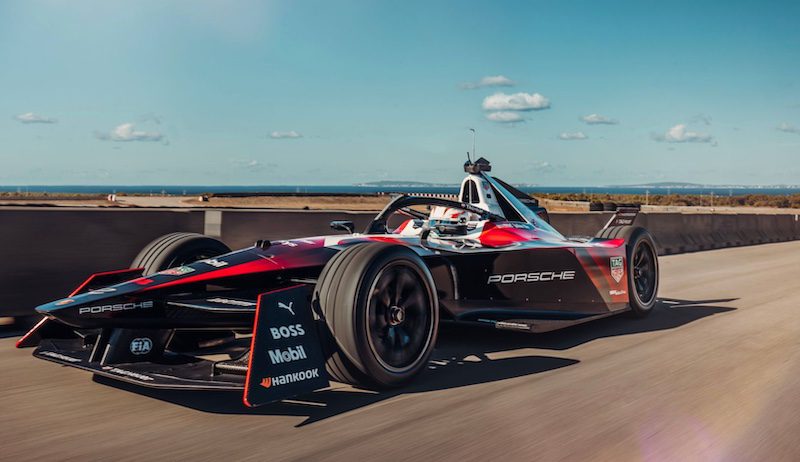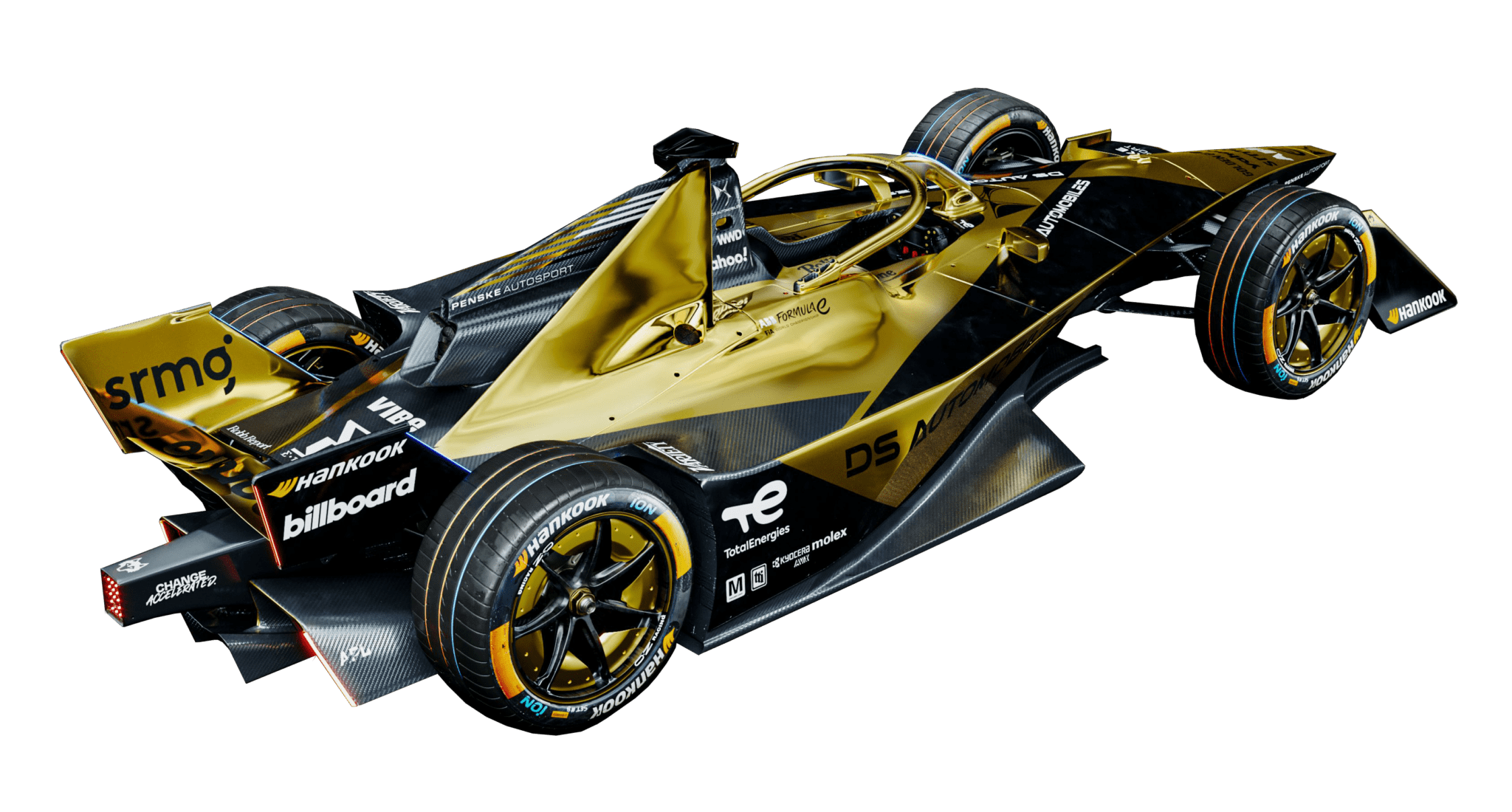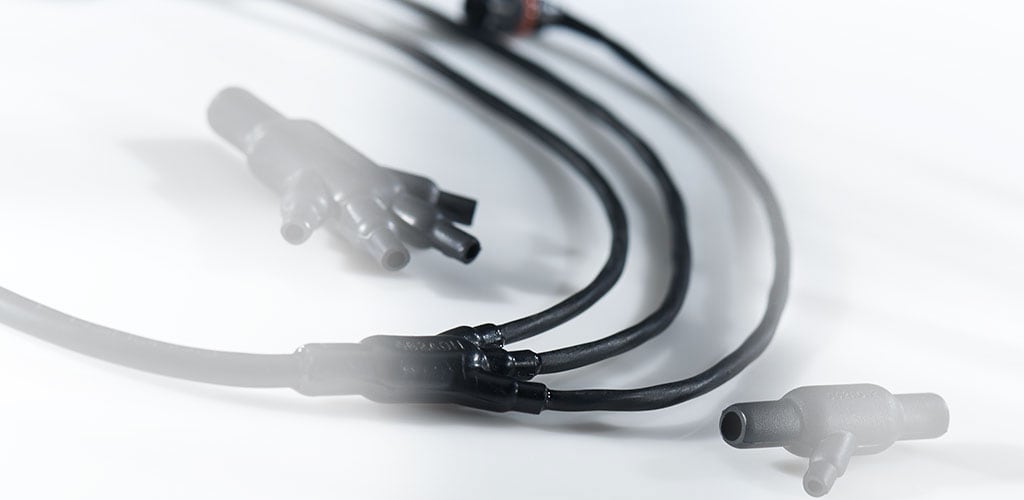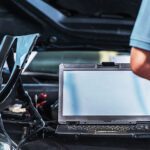How Formula E Contributes to e-Mobility Innovation
Lessons learned in the high-stakes performance racing market transfer to the evolution of automotive and autonomous technologies. High-speed interconnects are key to these designs.

In the rapidly changing landscape of motorsports, Formula E has redefined the boundaries of racing by combining adrenaline-fueled competition with a commitment to sustainable innovation. Formula E also serves as a dynamic laboratory for groundbreaking technologies that are shaping the future of transportation and automotive engineering.
The all-electric race series, now in its 10th year, has showcased three generations of exponentially improving electric drivetrains and high-performance vehicles. Connector suppliers are collaborating with engineers, manufacturers, and racing teams to push the boundaries of electric mobility, developing new strategies to refine electric drivetrains, regenerative braking systems, and battery technologies. For the 2023-24 race season, TE Connectivity, KYOCERA AVX, Fischer Connectors, Molex, Mouser Electronics, and TTI Inc. are contributing to the technologies that enable these vehicles to perform at speeds of 320 km/h (or 200 mph) on a series of street courses around the world.

KYOCERA AVX, Molex, Mouser, and TTI sponsor the Dragon/Penske Autosport car.
TE Connectivity’s Paul Webb has worked with Formula E designs since the very beginning, and the company supplies connectors, wire products, and heat sinks for use in the vehicles. Webb said that the company has focused on continuous miniaturization of interconnects to reduce vehicle weight, which contributes to improving speed and range. “Racing vehicles are so weight-critical that every component must be considered. Every gram counts. If you can save weight on the bits, with a smaller wire gauge or connector, it all adds up. But we still need to deliver reliability. Motor sports is pushing the limits in every way, so connections must endure vibration, heat, and course conditions.”
Webb said the components used in racing originate in MIL-Spec designs that go back to the 1970s. “They absolutely got it right back then — the wires, boots, heatsinks from back then are designed for performance. So that’s our starting point, but for size and weight, we take those parts and shave them down as much as possible. For instance, we looked at the sensor connectors and determined that we could get the reliability we needed with only half a flange — the mass of a connector that small, with one bit holding it in place, is enough for the job. That way we saved a little size and weight on every one of these used in the car.”

A wire harness used in motorsports, from TE, must endure heat, vibration, and the elements.
The lessons learned in developing systems for use in the race car translate over to the commercial automotive and even military/aerospace markets. “The UAV market is especially interested in what we are doing in motorsports, since their designs are also size- and weight-critical. Technologies that originated in MIL/aero came over to racing because of their durability, and we refined them and transferred them back to the MIL space,” said Webb. “People think that motorsports is pure entertainment, but we are solving design challenges that can be adopted for other uses. Car manufacturers are very interested. The Formula E engineers have learned so much that will make future electric vehicles better.”
The first-generation Formula E racing car was “very clunky” compared to today’s car, Webb said. And just a decade ago, the regenerative processes that help improve EV ranges wasn’t fully understood or implemented. “In the beginning, engineers said, ‘Look at that; you can get power back just from the operation of the vehicle.’ Now they understand how to optimize that power and deliver it back to the battery.”
The products used in motorsports are over-engineered because of the extreme demands of racing. But the same concepts are filtering into the consumer EV market, especially on the high end; Webb said some Formula E components are being used in the Gordon Murray T.50 Hypercar. “At TE, we manufacturer parts for all different levels. And it’s important to remember that even a basic road car uses thousands of interconnects. Think about something like a car seat adjustment system, with lumber support, heating, subtle controls for every fit. That system may not see the extreme grief a racing vehicle faces, but it does have to endure kids, dogs, dirt, heat, and cold — those are harsh environment conditions.
Meanwhile, the Gen4 car is in development now. Expected to debut for the 2026-27 racing season, technical specifications for the new car may include 700kW max of regen, 600 kW of maximum power release, an active front axle system, and refinements to the MGU (motor generator unit) and MCU (motor control unit). However, with the cross-market interchange of ideas surrounding electrification, those goals could be adjusted, and Formula E is ready to take advantage of every new development in technology.
“I am a true fan of motorsports – I couldn’t do what I do if I wasn’t all in. But what makes Formula E so exciting is all the innovation that is happening. Each team is constantly optimizing every aspect to the best of their ability, and the results benefit everyone, inside racing and beyond.”
Learn more about Paul Webb and how Formula E contributes to technology innovation.
Visit the Preferred Supplier pages for the companies mentioned in this article: Fischer Connectors, KYOCERA AVX, Molex, Mouser Electronics, TE Connectivity, and TTI Inc.
Like this article? Check out our other articles on EV’s and HEV’s and Connected Vehicles, our Automotive Market Page, and our 2023 Article Archive.
Subscribe to our weekly e-newsletters, follow us on LinkedIn, Twitter, and Facebook, and check out our eBook archives for more applicable, expert-informed connectivity content.
- Where in the World is Amphenol LTW’s Luc Kan? - April 23, 2024
- TE Connectivity’s Sustainability Efforts Pay Off - April 23, 2024
- What is a VGA Connector? - April 23, 2024





